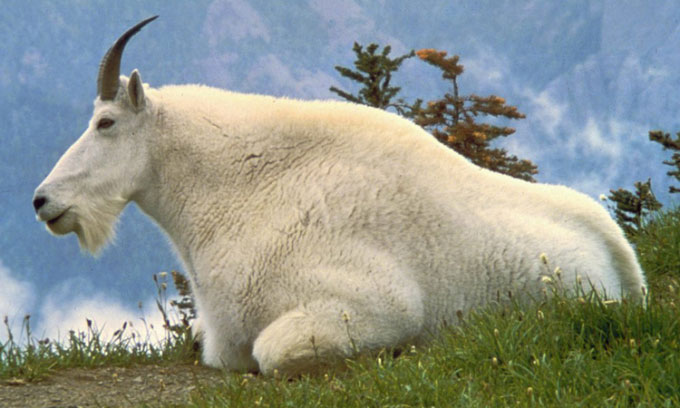Authorities Implement Plan to Eradicate Mountain Goats, Invasive Species Carrying Dangerous Diseases and Competing for Food with Native Bighorn Sheep.
To protect the native Rocky Mountain bighorn sheep population in Grand Teton National Park, the National Park Service (NPS) has culled a total of 58 invasive mountain goats in an aerial shooting campaign last week. According to the NPS, this method allows hired personnel to act from helicopters, which is safer and more efficient compared to previous ground hunts involving trained volunteer groups.

Mountain goats carry deadly diseases to bighorn sheep while competing for food sources. (Photo: U.S. Fish and Wildlife Service/Wikimedia Commons)
The new campaign is part of the Grand Teton Mountain Goat Management Plan, established in 2020 to protect bighorn sheep from habitat competition and diseases transmitted by mountain goats.
In 2020, 108 volunteers killed 43 mountain goats. They were invited to participate in another hunting session in the fall of 2021, removing 20 more goats. In this third year, the program shifted to aerial shooting after considering the safety of the volunteers.
Millions of bighorn sheep once roamed across North America, but by the early 1900s, their numbers dwindled to just a few thousand. According to the Post Register in 2019, they died due to hunting and diseases spread from domestic sheep. Confined to the western regions, such as the Teton Range, the current bighorn sheep population is smaller and at risk of extinction. The NPS estimates that the herd in the Teton Range now consists of only 125 individuals.
Mountain goats pose serious problems for the native bighorn sheep. They introduce lethal bacterial diseases to a population that has been isolated. Originally, mountain goats were brought to the Snake River Range for hunting purposes. They later migrated and settled in the Teton Range during the 1960s and 1970s, exerting pressure on the already limited food resources available to bighorn sheep.
“We believe the issue is particularly severe in winter foraging areas. In Teton, such areas are very limited, high in elevation, and windy, providing insufficient food for too many animals,” explained Doug McWhirter, wildlife management coordinator at the Wyoming Game and Fish Department.
Over 100 mountain goats have been culled since the management plan was implemented, but this may not be all of them. “Given the terrain, it’s difficult to accurately determine how many mountain goats remain in the park. Every identified mountain goat has been removed, but we suspect there may still be a few individuals left,” said Jeremy Barnum, director of Grand Teton National Park.


















































